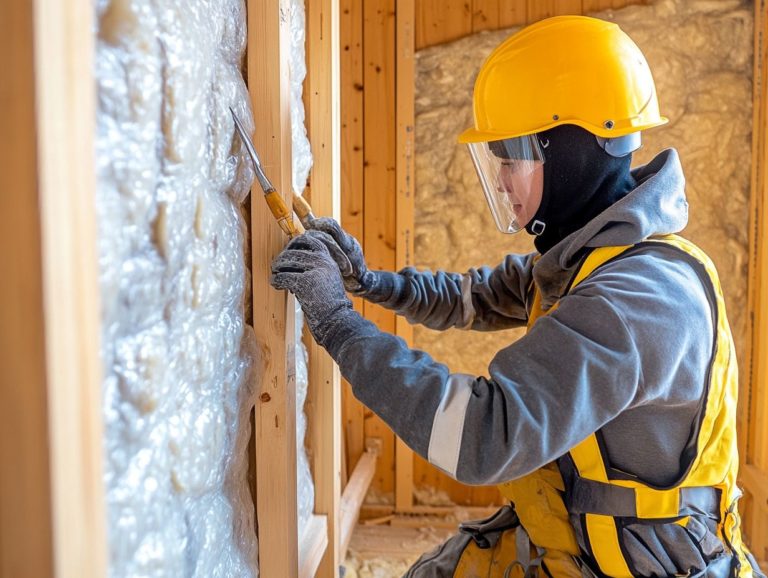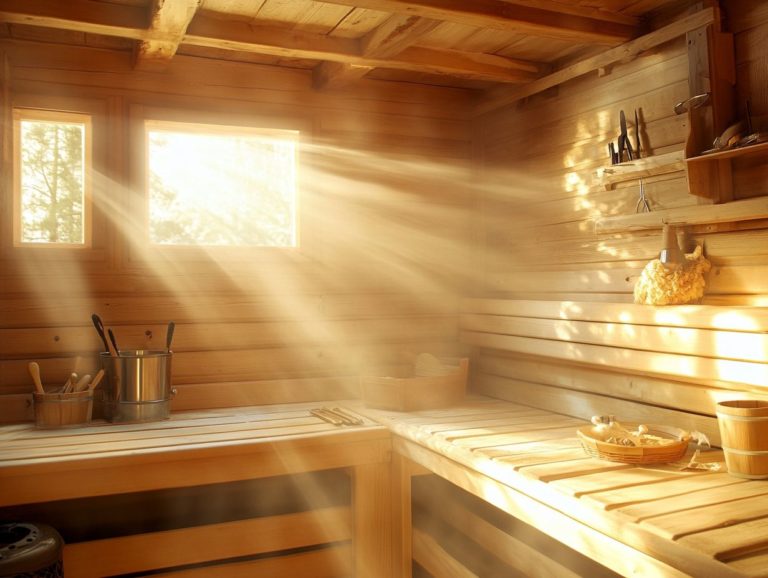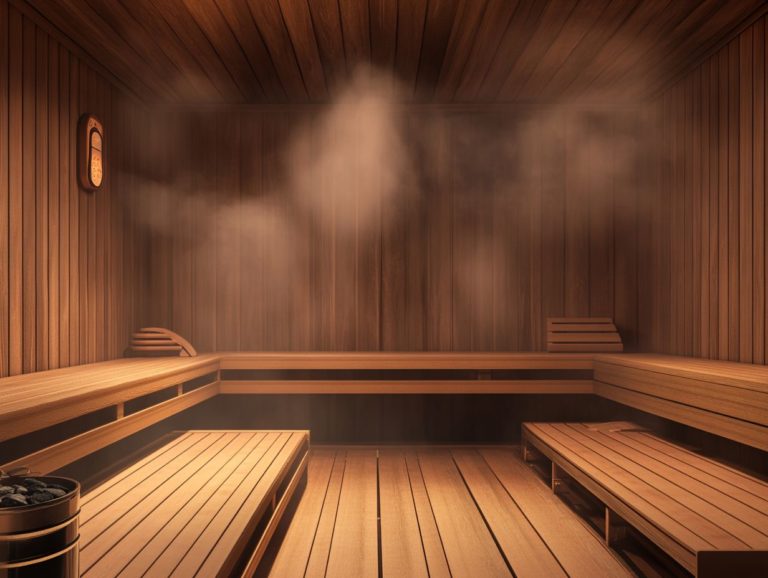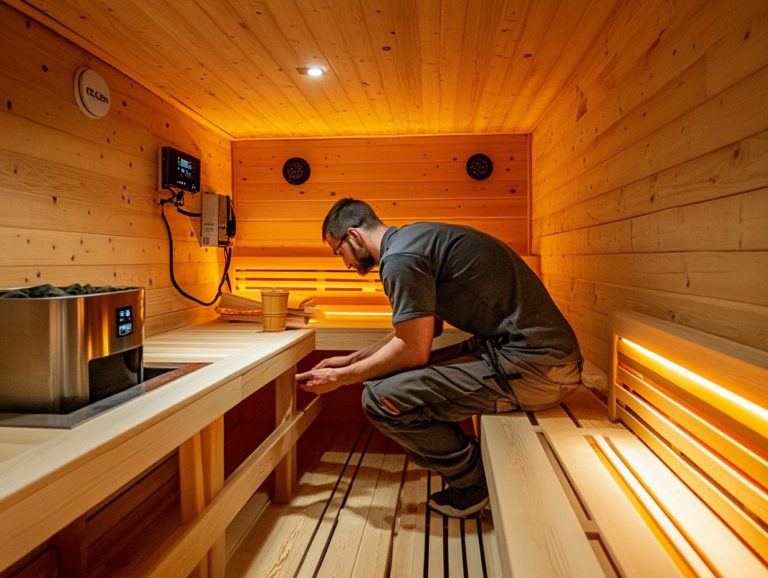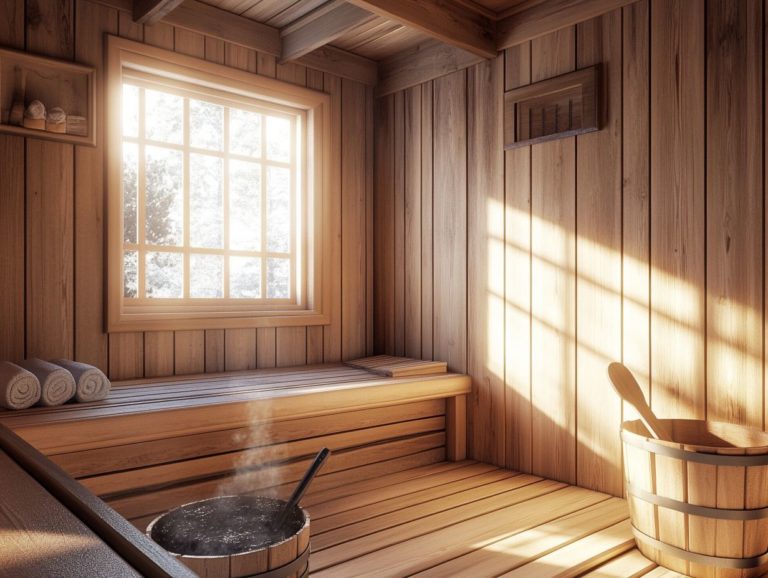Sauna Floor Care: Best Practices
Maintaining a sauna can be truly rewarding, especially when it comes to preserving its floor. This is vital for both aesthetics and functionality, enhancing the overall experience.
This article explores various types of sauna flooring materials from wood to tile. It highlights common issues that can arise, ensuring you understand the importance of sauna care and cleaning habits.
You ll discover practical cleaning tips and maintenance strategies to keep your sauna floor in peak condition. This creates a welcoming environment perfect for relaxation, enhancing your wellness center experience.
Learn how to safeguard and extend the life of your sauna floor by following essential maintenance practices!
Contents
- Key Takeaways:
- The Importance of Proper Maintenance
- Types of Sauna Floors
- Common Issues with Sauna Floors
- Cleaning and Maintenance Tips
- Protecting Your Sauna Floor
- Frequently Asked Questions
- What are the best practices for sauna floor care and maintaining a relaxing sauna experience?
- How often should I sweep and mop my sauna floor?
- What type of cleaner should I use for my sauna floor?
- Can I use a steam cleaner on my sauna floor for effective deep cleaning?
- How can I prevent slips and falls on my sauna floor and ensure proper hygiene practices?
- What should I do if there is a stain on my sauna floor, especially sweat stains?
Key Takeaways:
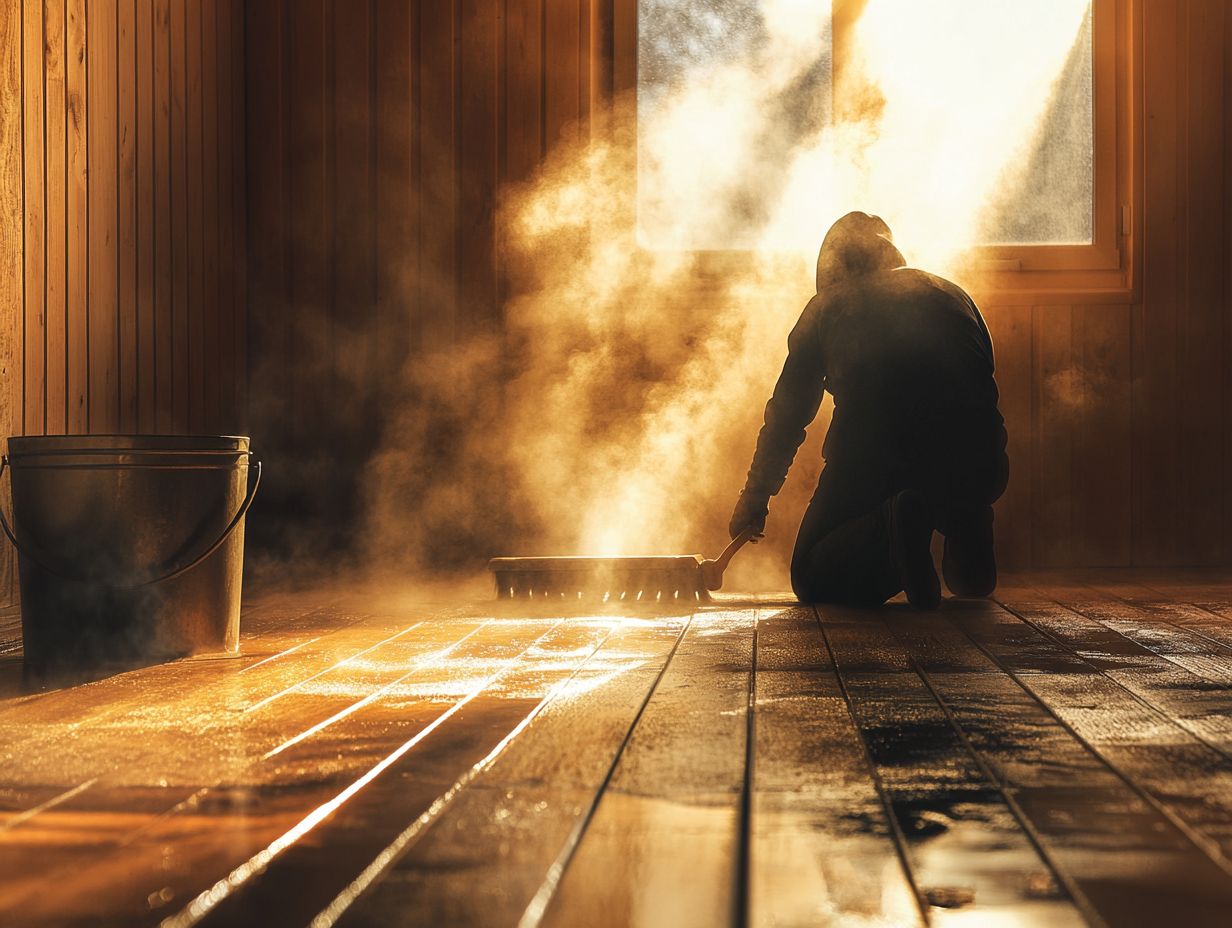
- Clean regularly to ensure safety and longevity of your sauna floor.
- Choose moisture-resistant flooring for durability, such as wood or tile.
- Use gentle cleaning products to preserve the appearance of your sauna floor.
The Importance of Proper Maintenance
Proper maintenance is essential for the longevity of your sauna and the many health benefits it offers, like improved blood circulation and relief from joint pain. Regular upkeep elevates the aesthetic appeal of the wooden interior and enhances your overall relaxing experience.
Effective sauna care involves adhering to proper cleaning habits. Following suitable cleaning techniques ensures a safe and pleasant environment for everyone.
Paying attention to temperature recommendations is also vital. Regularly airing out the sauna prevents moisture buildup and potential damage.
Types of Sauna Floors
You ll find a range of materials for sauna floors, each with its own benefits and aesthetic appeal. Wood is cherished for its natural beauty, especially high-quality options like cedar, while tile offers easy cleaning.
Wooden interiors are popular as they endure high temperatures and humidity. Selecting the right material, like cedar, enhances both functionality and your relaxing experience.
Wood, Tile, and Other Materials
The materials you choose can greatly influence maintenance and design. Cedar is a favorite for durability and moisture resistance, while tile provides a sleek, easy-to-clean option.
Cedar’s charming aroma and natural antibacterial properties make it an excellent choice. Unlike some hardwoods, it remains stable despite temperature fluctuations, minimizing the risk of warping.
Tile surfaces may require less frequent maintenance but can become slippery when wet. It s wise to select textured options for safety.
Regular sweeping and the occasional damp mop will keep your wooden floors in top shape. Tile may need periodic deep cleaning to prevent grime buildup.
Incorporating distilled water into your cleaning routine can also help. Understanding these maintenance implications allows sauna owners to make informed decisions that balance aesthetics and practicality seamlessly.
Start your sauna maintenance journey today for a healthier and more enjoyable experience!
Common Issues with Sauna Floors
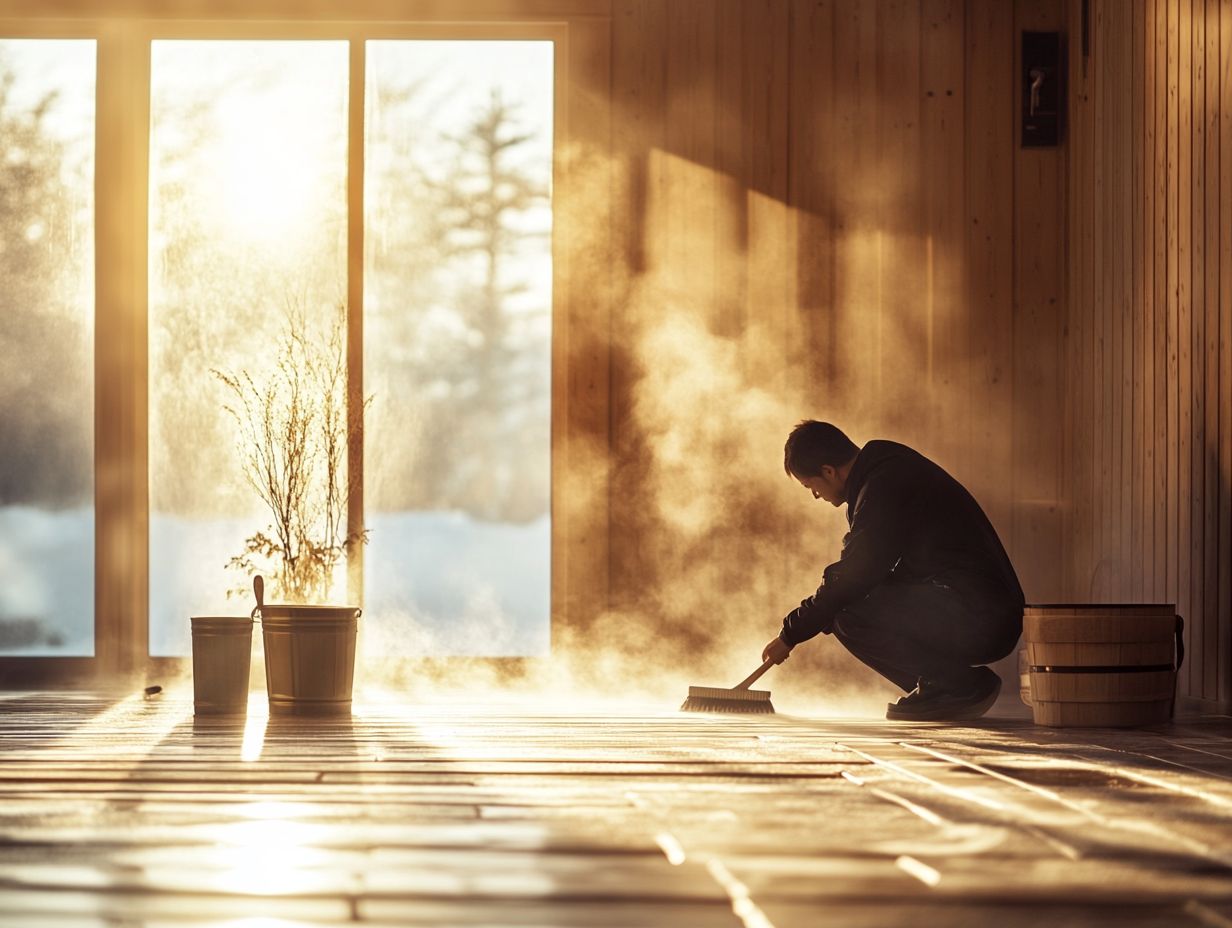
Common issues with sauna floors can stem from moisture accumulation, improper maintenance, or insufficient hygiene practices. These factors may result in damage over time.
It’s crucial for you to recognize these problems early on to preserve your sauna’s integrity and maintain a relaxing experience.
Whether you’re grappling with water damage or tackling hygiene concerns, mastering this knowledge enables you to maintain a safe and enjoyable environment for users of the sauna, promoting overall wellness.
Preventing and Addressing Damage
Preventing and addressing damage to your sauna floors requires regular maintenance and effective cleaning techniques. Regularly airing out the sauna not only maintains air quality but also prevents moisture build-up, which could lead to serious damage over time.
By implementing proper hygiene practices and using the right cleaning products, including sauna cleaning agents, you ensure the longevity of both the sauna structure and your overall relaxing experience.
To elevate your sauna care, it s essential to establish a regular cleaning schedule. This should include sweeping and mopping with gentle, non-abrasive cleaners specifically formulated for wood surfaces.
Place moisture-wicking mats at entry points to catch excess water and dirt. This reduces the risk of slips and damage while enhancing personal hygiene.
It’s equally important to promptly address spills and leaks to prevent mold and mildew from gaining a foothold, ultimately safeguarding the integrity of your sauna. Embrace these care strategies to create a healthier and more inviting sauna. Enjoy every moment in your revitalized retreat!
Cleaning and Maintenance Tips
Effective cleaning and maintenance tips are crucial for preserving the integrity of your sauna, ensuring it remains a sanctuary for relaxation and wellness. By utilizing natural products and the right cleaning products, you can minimize harmful chemicals while effectively tackling sweat stains and upholding hygiene in your sauna.
Incorporating distilled water into your cleaning routine will also help prevent mineral build-up, keeping your sauna in pristine condition and ensuring optimal hygiene.
Recommended Cleaning Products and Techniques
Choosing the right cleaning products and techniques is essential for maintaining your sauna and ensuring optimal hygiene. Commonly recommended cleaning agents like baking soda and specialized sauna cleaners work wonders, gently removing stains while preserving the wood’s integrity, especially for surfaces like the sauna bench.
When you use these products correctly, you not only enhance your sauna’s cleanliness but also prolong its lifespan.
Vinegar is another powerful ally in your cleaning arsenal; it acts as a natural disinfectant that tackles odors and eliminates bacteria, contributing to a healthier environment. If you’re committed to deep cleaning, a steam cleaner can be particularly effective, reaching those pesky crevices and surfaces that often go unnoticed.
Microfiber cloths are critical, too. Their non-abrasive nature allows you to wipe down surfaces without scratching the wood. To maintain peak hygiene, consider establishing a regular cleaning schedule, ensuring that every sauna user can consistently enjoy a fresh and inviting atmosphere.
By incorporating these practices, you ll keep your sauna not just clean, but also a rejuvenating sanctuary that invites relaxation and wellness, echoing traditions from Finland, Sweden, and Estonia.
Protecting Your Sauna Floor
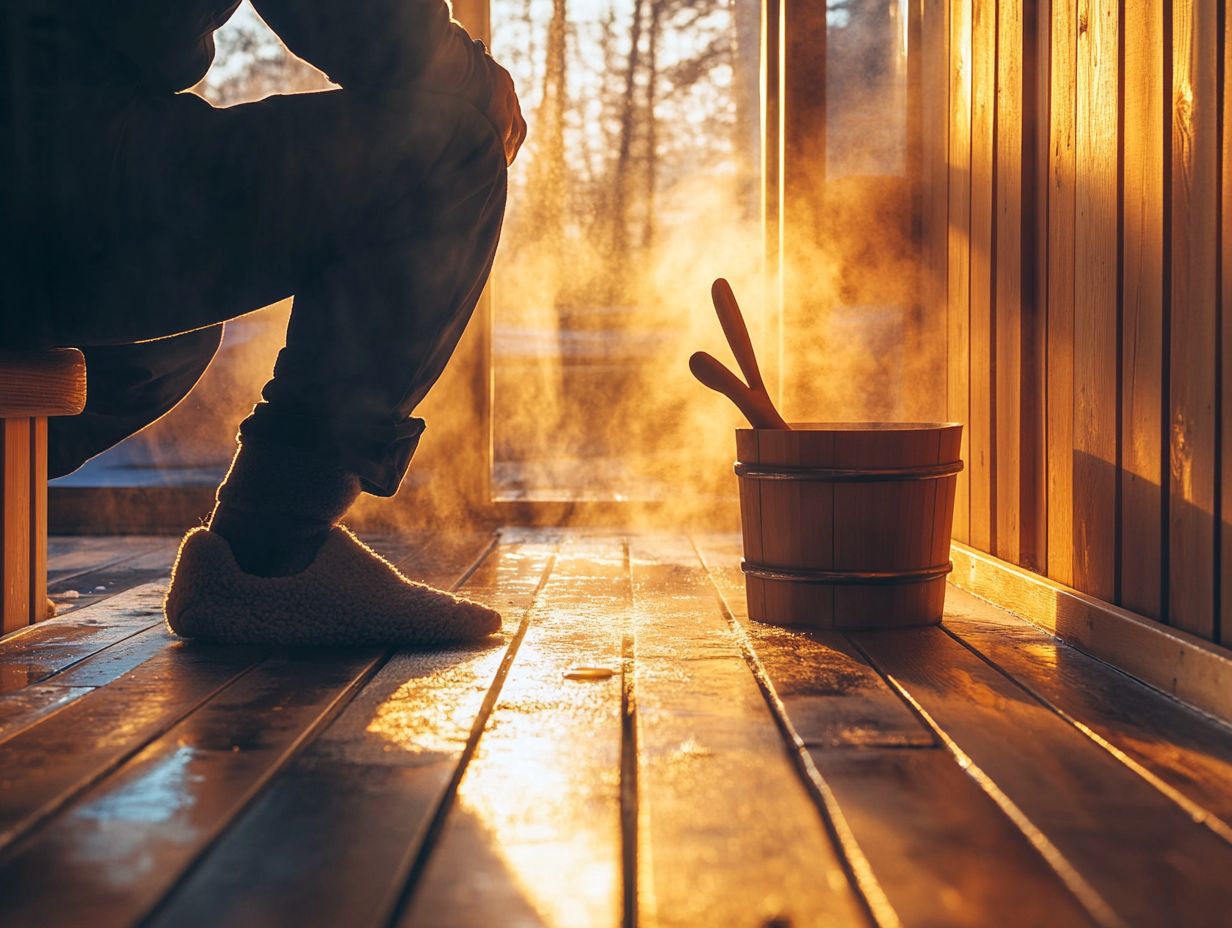
Protecting your sauna floor is vital for maintaining its durability and aesthetic appeal over time, particularly given the elevated temperatures and humidity levels that saunas frequently endure.
By applying wood preservatives, you can effectively shield it from wear and tear while ensuring optimal sauna care.
Additionally, following proper temperature guidelines during your sauna sessions will help keep the floor in prime condition.
Following these maintenance tips will keep your sauna floor looking great and enhance your relaxation. Invest in your sauna care for lasting enjoyment!
Tips for Long-Term Maintenance and Preservation
Long-term maintenance of your sauna requires consistent care. Follow practices that promote longevity and hygiene.
Regularly airing out the sauna, cleaning regularly, and following stringent hygiene protocols are essential components of successful sauna care. These proactive measures elevate your experience and protect your investment in your home sauna for years to come.
To keep the wood in pristine condition, apply a protective sealant a special coating that protects the wood periodically; this guards against moisture and heat damage.
Proper ventilation is paramount. A well-ventilated sauna prevents the growth of mold and unpleasant odors, ensuring a refreshing atmosphere with every use and promoting overall wellness.
Make it a habit to check and replace any worn-out components, such as the heater or sauna accessories, to maintain optimal performance. Use moisture-wicking towels to enhance hygiene, especially for those using the sauna after a steam bath. Regularly inspect for signs of wear to address repairs promptly.
By incorporating these essential sauna care routines, such as using a wood preservative and proper cleaning agents, you can make your sauna a welcoming haven that truly withstands the test of time.
Frequently Asked Questions
What are the best practices for sauna floor care and maintaining a relaxing sauna experience?
The best practices for sauna floor care include regular sweeping and mopping, using mild cleaners, avoiding abrasive materials, and promptly addressing any spills or stains.
How often should I sweep and mop my sauna floor?
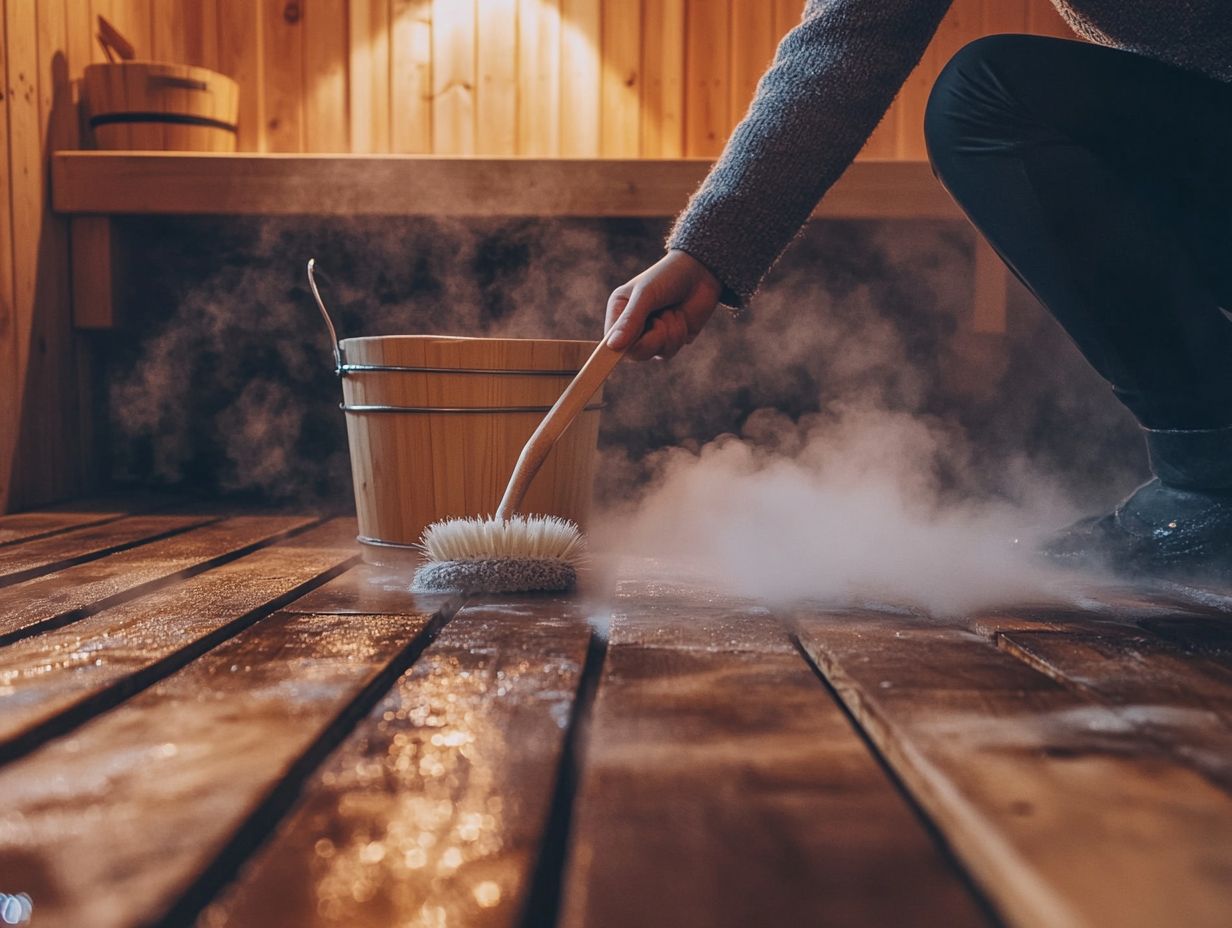
Sweep and mop your sauna floor weekly to remove any dirt, dust, and debris that may have accumulated, particularly after sauna sessions.
What type of cleaner should I use for my sauna floor?
It is best to use a mild, non-abrasive cleaner specifically designed for sauna floors, such as a sauna cleaning agent. Avoid using harsh chemicals or abrasive cleaners, as they can damage the wood or other materials, compromising your sauna’s health benefits.
Can I use a steam cleaner on my sauna floor for effective deep cleaning?
No, it is not recommended to use a steam cleaner on your sauna floor. The high heat and moisture can damage the wood and cause warping or cracking.
How can I prevent slips and falls on my sauna floor and ensure proper hygiene practices?
To prevent slips and falls on your sauna floor, keep it clean and free of spills or water. Consider using non-slip mats or adding an anti-slip coating to the floor.
What should I do if there is a stain on my sauna floor, especially sweat stains?
If there is a stain on your sauna floor, address it promptly by using a mild cleaner and gently scrubbing the area. If the stain does not come out, contact a professional for assistance.


